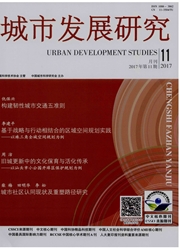

 中文摘要:
中文摘要:
邻里作为基于地缘关系的生活共同体,随着各历史阶段的社会发展不断演化。较之古代高度同质、封闭、亲密的邻里,现代城市邻里则更具开放性。各种内外部因子的介入与作用,使得邻里互动的契机减少,邻里交往衰落,并引发各种城市社会问题。通过对“移动社区金融”的事例解析,初步探寻现代城市邻里的属性回归及其可能的激活路径。从邻里的本质和综合属性出发,结合邻里的内生动力模型分析,多维度解读其暗含的新型“邻里性”。研究指出,移动社区金融以社区居民的日常活动为基点,以金融产品为平台和介质,形成银行、地产公司、物业、周边商户、社区居民等多方的利益链条,以培育生活共同体为纽带和核心动力,实现多方主体的互动与共赢,在一定程度上使邻里单元重新找回其活力和精神。
 英文摘要:
英文摘要:
Neighborhood as a "common unit" based on geographical relation, has kept on changing to respond the demand of human being. Compared with ancient neighborhood with the characteristics of highly homogeneous, enclosed and intimate relations, modern neighborhood turns to be more open, various internal and external factors intervene and take effect on it, neighborhood association decline which further triggers a variety of social problems. This paper aims to investigate the return of neighborhood attributes and activation paths by the case study of " Mobile Banking for Community. And with the nature and attributes of neighborhood and its endogenous dynamic pattern, this paper advances multidimensional interpretation of the "new neighboring" in modern cities, research found that " Mobile Banking for Community" originated from community residents' daily life, taking financial products as platform and media, the multiple participators of bank, real estate company, property management company, surrounding businesses and local community form active interaction and a strong benefit relationship, that cultivate the "life common unit" as a link and core power, and achieve the interaction and win-win, so that lead to the neighborhood unit regaining its vitality and spirit.
 同期刊论文项目
同期刊论文项目
 同项目期刊论文
同项目期刊论文
 期刊信息
期刊信息
